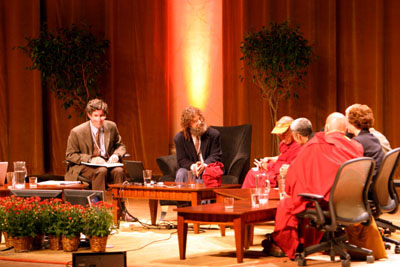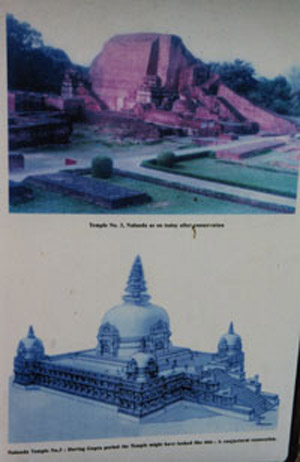
Suzan Doan
Acton Boxborough Regional High School - Acton, Massachusetts.
Tibetan Buddhism and Sakya Masters
| Tibetan Buddhism Introduction
Photo from web For as long as space endures **************
Influence to the West
His Holiness the Dalai Lama meets with scientists in Washington D.C. Nov 2005. Photo by S. Doan
In the early 1960, thousands of Tibetans fled Tibet to India to seek refuge from the religious persecution of the Chinese communists. The disaster of Tibet being invaded by the Chinese made room for the spread of Tibetan Buddhism to Australia, Europe, and the Americas. This migration has also opened the doors for foreign scholars and scientists who are interested in Tibetan studies and Buddhist studies to be able to invite qualified lama scholars to engage in various studies within certain academic circles. One evident was the ongoing dialogs and collaborating research between scientists, contemplatives, the 14th Dalai Lama, and Tibetan lama scholars to find a deeper understanding of the nature of reality and to promote well being among humanities.
Copyright © by S.Doan Science and Buddhism A human being is a part of a whole, called by us universe, a part limited in the time and space. EINSTEIN *****************************
New Transmissions in Tibetan Buddhist History.
Nalanda University ... now and prior to 1200.
*May this merit be dedicated towards the full attainment of awakening for the benefit of all sentient beings.
This site is still under construction. Any suggestions, kindly contact: sddoan@comcast.net Copyright © 2006 Suzan Doan All Rights Reserved |
This site was created by Suzan Doan at the NEH Summer Institute "Cultures and Religions of the Himalayan Region," held at the College of the Holy Cross, Summer 2006






